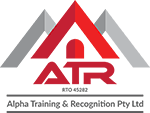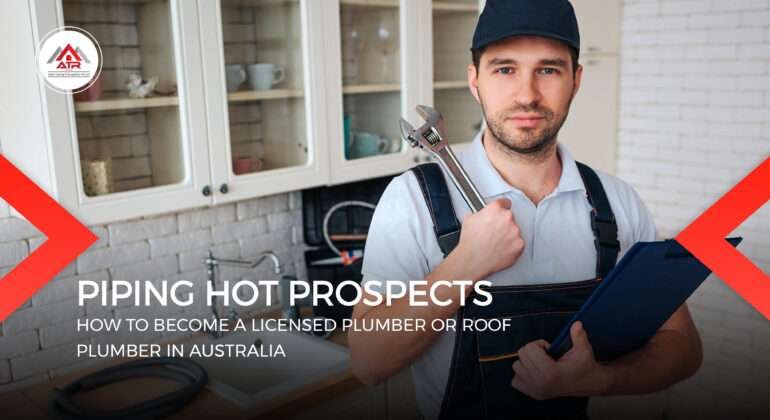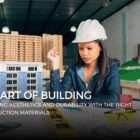Your Comprehensive Guide to Becoming a Licensed Plumber or Roof Plumber in Australia
Introduction
In the vast landscape of the Australian job market, where opportunities flow like water through pipes, a career in plumbing stands out as a solid and rewarding choice. With years of experience in the vocational training industry, I’ve witnessed countless individuals embark on their journey to becoming licensed plumbers or roof plumbers. In this article, we’ll navigate the twists and turns of this career path, providing you with a complete guide on how to become a licensed plumber or roof plumber in Australia.
Plumbing Pathways: An Overview
Before diving into the specifics, let’s start with an overview of the plumbing journey in Australia. Becoming a licensed plumber involves several key steps:
Education: Pursue formal education and training in plumbing through a recognized institution or apprenticeship.
Apprenticeship: Gain hands-on experience by working as an apprentice under the guidance of a licensed plumber.
Licensing: Obtain the necessary licenses and certifications to work as a qualified plumber or roof plumber.
Example: Think of the journey to becoming a licensed plumber as building a sturdy pipeline of knowledge, skills, and experience, ready to deliver the vital service of plumbing to the community.
Key Takeaway: Becoming a licensed plumber is a structured process that involves education, apprenticeship, and licensing.
Plumbing Education: Where It All Begins
To lay the foundation for a successful plumbing career, the first step is acquiring the knowledge and skills required for the trade. This typically involves:
Enrolling in a Plumbing Course: Choose a recognized vocational training provider or Registered Training Organization (RTO) offering plumbing courses. These courses cover essential theoretical and practical aspects of plumbing.
Certificate III in Plumbing: This nationally recognized qualification is a common starting point for aspiring plumbers. It equips you with the fundamental skills needed in the field.
Example: Enrolling in a plumbing course is like setting the cornerstone of a sturdy building. It’s where your plumbing journey begins, and the knowledge you gain becomes the strong foundation of your career.
Key Takeaway: Formal education in plumbing sets the stage for a successful career by providing you with the necessary knowledge and skills.
Plumbing Apprenticeship: Hands-On Experience
One of the hallmarks of becoming a licensed plumber in Australia is the hands-on training gained through an apprenticeship. This phase involves:
Finding an Employer: Seek out a licensed plumbing business or contractor willing to take you on as an apprentice.
On-the-Job Training: Work alongside experienced plumbers, gaining practical experience in various aspects of plumbing, including installation, maintenance, and repairs.
Supervised Learning: Your journey as an apprentice is guided by experienced plumbers who mentor you and help you develop essential skills.
Example: Embarking on an apprenticeship is akin to working on a construction site, where you learn the ropes from experienced builders, acquiring the practical knowledge needed to construct a successful career.
Key Takeaway: An apprenticeship is a vital part of your plumbing journey, allowing you to gain hands-on experience under the guidance of industry experts.
Licensing: The Culmination of Your Journey
The pinnacle of your journey to becoming a licensed plumber is obtaining the necessary licenses and certifications. In Australia, licensing requirements vary by state and territory, but they generally involve:
Completing a Plumbing Registration: This step may include passing exams, demonstrating your skills, and meeting specific criteria set by your state or territory.
Applying for a License: Once you meet the requirements, you can apply for a plumbing license or registration, which allows you to work independently as a qualified plumber.
Example: Obtaining a plumbing license is like receiving the keys to your own plumbing business. It signifies that you’ve successfully completed your training and are ready to take on the challenges of the plumbing world.
Key Takeaway: Licensing is the culmination of your plumbing journey, signifying your readiness to work as a licensed plumber or roof plumber.
Challenges and Considerations
As you embark on your path to becoming a licensed plumber, it’s essential to be aware of some common challenges and considerations:
Age and Career Change: Plumbing is a field that welcomes individuals of various ages and backgrounds, so don’t let your age deter you from pursuing this career.
Physical Demands: Plumbing work can be physically demanding, so maintaining good physical health is important.
Continuous Learning: The plumbing industry is ever-evolving, and staying updated with the latest techniques and technologies is crucial.
Safety: Prioritizing safety is non-negotiable in plumbing, as it involves working with potentially hazardous materials and equipment.
Example: Think of your plumbing journey as a challenging but rewarding climb up a steep hill. Each step you take brings you closer to your goal, and with the right preparation, you can overcome any obstacles along the way.
Key Takeaway: Being aware of potential challenges and staying committed to safety and continuous learning is essential for a successful plumbing career.
Conclusion
As we conclude our journey through the plumbing landscape in Australia, I hope you’ve gained valuable insights into how to become a licensed plumber or roof plumber. Much like plumbing itself, this career path is a vital service that keeps our communities running smoothly.
Remember, your journey to becoming a licensed plumber involves education, apprenticeship, and licensing. It requires dedication, hard work, and a commitment to safety and continuous learning. So, whether you’re just starting or considering a career change, know that the plumbing industry welcomes individuals of all ages and backgrounds, ready to shape a future of piping hot prospects in the world of plumbing.



